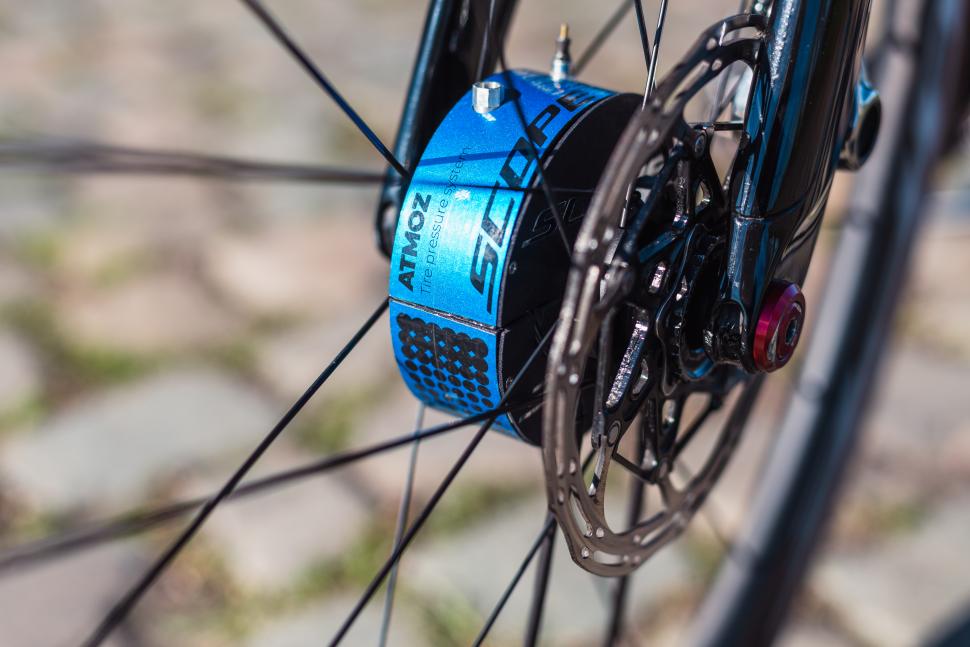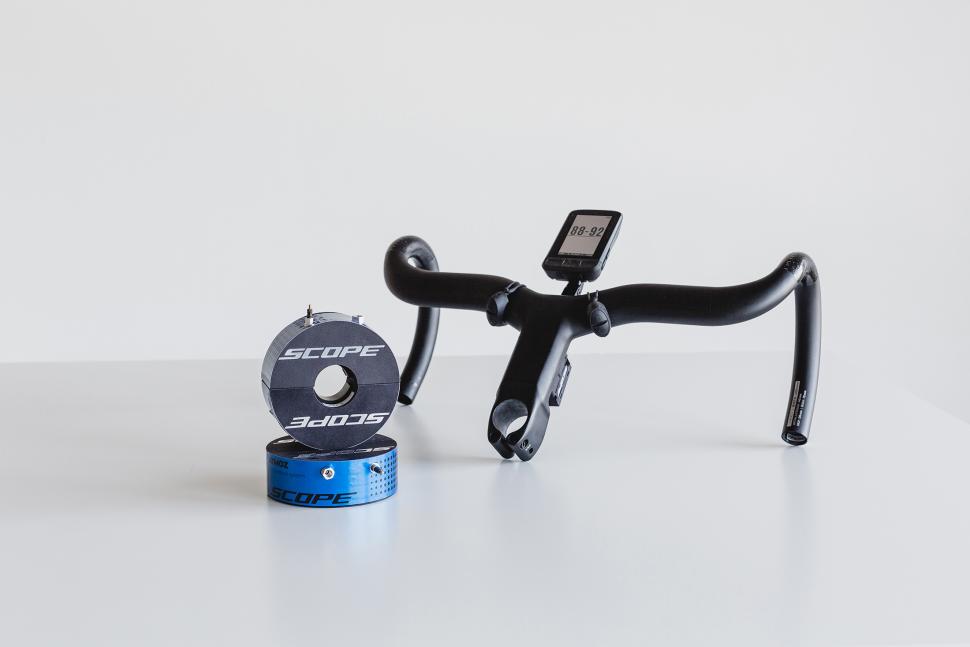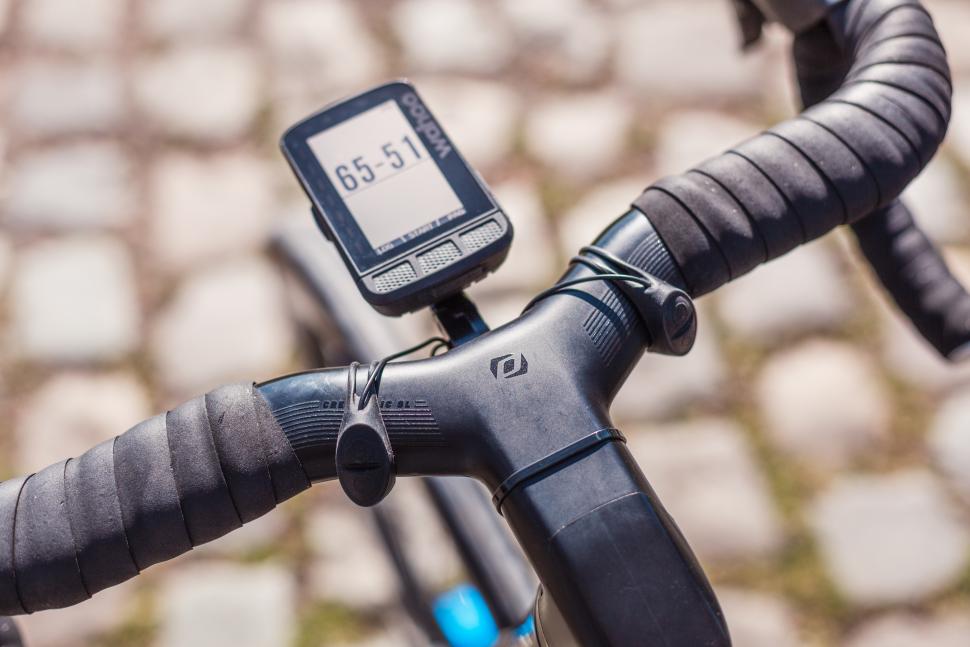- News
- Reviews
- Bikes
- Accessories
- Accessories - misc
- Computer mounts
- Bags
- Bar ends
- Bike bags & cases
- Bottle cages
- Bottles
- Cameras
- Car racks
- Child seats
- Computers
- Glasses
- GPS units
- Helmets
- Lights - front
- Lights - rear
- Lights - sets
- Locks
- Mirrors
- Mudguards
- Racks
- Pumps & CO2 inflators
- Puncture kits
- Reflectives
- Smart watches
- Stands and racks
- Trailers
- Clothing
- Components
- Bar tape & grips
- Bottom brackets
- Brake & gear cables
- Brake & STI levers
- Brake pads & spares
- Brakes
- Cassettes & freewheels
- Chains
- Chainsets & chainrings
- Derailleurs - front
- Derailleurs - rear
- Forks
- Gear levers & shifters
- Groupsets
- Handlebars & extensions
- Headsets
- Hubs
- Inner tubes
- Pedals
- Quick releases & skewers
- Saddles
- Seatposts
- Stems
- Wheels
- Tyres
- Health, fitness and nutrition
- Tools and workshop
- Miscellaneous
- Cross country mountain bikes
- Tubeless valves
- Buyers Guides
- Features
- Forum
- Recommends
- Podcast
TECH NEWS
 Scope Atmoz 2023
Scope Atmoz 2023Team DSM set to use on-the-fly tyre pressure adjustment at Paris-Roubaix
Team DSM may currently be under a rather dubious investigation by the UCI for their controversial road-blocking tactics at last weekend’s Tour of Flanders, but another innovative scheme seems to have slipped through the net of the notoriously picky and hard to please governing body: the use of a ground-breaking on-the-fly tyre pressure adjustment system, just in time for the bone-shaking cobbled roads of Paris-Roubaix.
Stop us if you’ve heard this one before. This time last year, Team DSM appeared all set to roll out the Scope Atmoz – a €3,000 inflation hub which allows riders to change their tyre pressure at the push of a button – at the 2022 Hell of the North, before the experimental scheme was put on hold at the last minute.
But Dutch wheel manufacturer Scope Cycling says that, following a “test year” which saw the Scope Atmoz used in various “hectic” races to “make all riders feel comfortable riding with varying tension” in their tyres, the system has now been “thoroughly tested in training and races and passed all tests” – and, it seems, is finally ready to take on one of cycling’s most brutal, and relevant, races.
So, what’s the big fuss over this system, and why is it so useful for Paris-Roubaix?
The Scope Atmoz, which has been developed in collaboration with Team DSM since 2020 and which was granted approval by the UCI last year, can almost instantly inflate and deflate a tyre, changing the pressure by up to 0.5 bar per second, using an air reservoir housed within the hub which is linked via a hose to a tubeless rim.
Mechanical valves open and close to control the pressure within the tyre, and the rider is able to view front and rear pressure via a compatible head unit thanks to ANT+ and Bluetooth connectivity.
To inflate or deflate their tyres, the Team DSM riders will simply press a button on their handlebars, sending a wireless signal to the mechanical valves.
Scope says the hub is free of resistance, lightweight (Scope says each hub weighs 300g), and reliable, with the company boasting that the potentially revolutionary system eschews marginal gains for “significant gains”.
Those significant gains will certainly come in handy at Paris-Roubaix, perhaps the race on the international road calendar where tyre pressure matters the most.
Aside from rolling resistance and cornering grip, you’ve also got to get over some of the roughest cobbled sectors in the world. Finding the balance between speed, comfort, and cornering grip is very tricky and Roubaix is a race with around 150km of perfectly good tarmac too, so you can’t just deflate your tyres to super low levels.
A rider would therefore have a significant advantage if they could start the race with higher pressures before lowering those pressures when the dreaded pavé arrives, with Scope claiming “up to 30 watts of reduced rolling resistance.”
> On-the-fly tyre pressure adjustment appears on Dwars door Vlaanderen cobbles
The benefits of such a system at Paris-Roubaix – a race with a history of ground-breaking, and sometimes wacky, technical innovations – haven’t been lost on other teams in the peloton.
According to WielerFlits, the dominant men’s team of the spring classics, Jumbo-Visma (just don’t mention the Ronde), will also line up at the start in Compiègne on Sunday with their own adjustable tyre pressure system.
At Dwars door Vlaanderen last week, Edoardo Affini was spotted using the Gravaa KAPS, a system which uses what the Dutch company describes as “a miniature reciprocal membrane pump” to control tyre pressure via a wireless control unit mounted to the handlebar.
👀 Looks like Affini is testing the KAPS adjustable air pressure system. #DDV23 #DDV pic.twitter.com/myK3cltMrF
— Janus (@JVerlaeckt) March 29, 2023
While Affini recorded a DNF using the system last week, WielerFlits reports that last year’s Paris-Roubaix winner Dylan van Baarle, now riding in the yellow and black of Jumbo-Visma, has tested the Gravaa KAPS system during training and is very pleased with it.
So, who will come out on top in the tyre pressure arms race in the Roubaix velodrome?
Well I’m not a betting man, but a quick glance at the form book and the provisional start list for the Hell of the North makes it plain where the smart money will go on Sunday. Sorry, Scope…
After obtaining a PhD, lecturing, and hosting a history podcast at Queen’s University Belfast, Ryan joined road.cc in December 2021 and since then has kept the site’s readers and listeners informed and enthralled (well at least occasionally) on news, the live blog, and the road.cc Podcast. After boarding a wrong bus at the world championships and ruining a good pair of jeans at the cyclocross, he now serves as road.cc’s senior news writer. Before his foray into cycling journalism, he wallowed in the equally pitiless world of academia, where he wrote a book about Victorian politics and droned on about cycling and bikes to classes of bored students (while taking every chance he could get to talk about cycling in print or on the radio). He can be found riding his bike very slowly around the narrow, scenic country lanes of Co. Down.
Latest Comments
- Johnny Rags 5 sec ago
Thank you for a very informative article, but I'm afraid everything I read about tubeless makes it sound like an awful lot of arseache just to...
- Rendel Harris 57 sec ago
It's not available on the NHS but it can legally be prescribed by private doctors.
- S.E. 1 min 48 sec ago
Looks more like e-bikes than real Surrons (motorbikes) on the CCTV footage, but pictures are really blurry...
- ktache 5 min 50 sec ago
Was thinking about getting a Rohloff one, but then I got a Rohloff which made it a bit pointless. And, of course I only found about it when I was...
- edward.s 24 min 56 sec ago
I love how you talk about quality Hex wrenches and then show a picture of some Draper ones! Wera or Bondhus far better.
- pockstone 1 hour 22 min ago
If one's knuckles are several inches below one's ankles...?
- giff77 2 hours 47 min ago
Longwater junction is just nasty at the best of times. Road markings have vanished and it's a total free for all no mater what direction you are...
- JoanneH 3 hours 1 min ago
I can do the basics, but largely I prefer to take my bike to the LBS when it needs a service, when they check all the big things and sort them out...
- chrisonabike 3 hours 15 min ago
Agree about the blue badge / double yellows ... as you say it's moot in practice....




Add new comment
5 comments
Alternatively they could run tubulars and get the best of both worlds without all this high tech noncery
Research by Zipp on the Arenberg showed that tubeless tyres save 45 watts over the cobbles compared to tubulars. Why do you persist in your belief that pros are deliberately choosing slower or less efficient setups?
Also, unless I'm missing something (which I may well be) how do tubulars provide the same benefit of allowing you to choose different pressures for the different surfaces?
Chuck appears to be confusing tyre technologies with inflation technologies. The inflation technology could be applied to Tubes, Tubulars or Tubeless.
Tubular tyres only have advantages at extremes with no way to freely move between the two.
Extremely low pressure - stay stuck to the rim which helps in wet and muddy conditions (mostly cyclocross) - also helps you keep moving if you flat. Downsides are you still risk punctures.
Extremely high pressure - Helps a little with puncture resistance and very low resistance .Downsides are it makes ride quality very harsh and significantly slower on rougher surfaces. Hence favoured by track cyclists.
With a tubeless setup without the adjustable pressure system, you get the comfort of lower pressures without adding rolling resistance. In a clincher or a tubular tyre, the inner tube creates friction on the tyre carcass as it resists the deformation where the tread grips the road surface. Latex tubes create a lot less than butyl, but it is still a noticeable difference with a greater risk of puncture.
Even the kings of marginal gains, Ineos Grenadiers, run tubeless, even on mountainous stages an races, where they sacrifice at least 200g in weight over tubs. The rolling resistance gains have such a greater affect tubs could be nearly a kilo lighter before gaining parity on a tubeless setup.
Recent improvements to tubeless tech has made the system in road tyres much more robust. Sealants are better engineered for higher pressures of road tyres (especially now with 28mm you can run at around 60-65psi for best balance between comfort and rolling speed). It's still not as settled as in the off-road world but it's a lot better than it used to be.